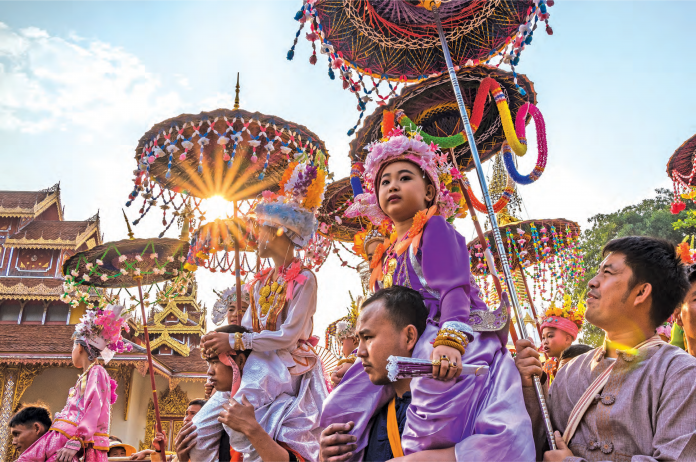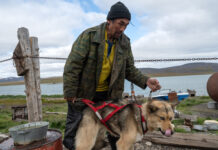The Shan people celebrate the ordination of young Buddhist novices with Poy Sang Long – an extravagant spiritual party that usually takes place between late March to mid-April.
Text by Claudio Sieber and Rachel Kwek
Images by Claudio Sieber
Every Buddhist male in Thailand needs to attend a monastery of their choice twice a lifetime: once before 20 years of age and again after that. Most Thais embark on this spiritual path when they are around 20 years old whereas the Shan typically do so from 7 to 14 years old. The Shan ethnic group inhabits Mae Hong Son and other northern provinces in Thailand like Chiang Mai and Chiang Rai. The majority of Shan (known as Tai Yai in Thailand) are Theravada Buddhists who observe Poy
Sang Long – a rite of passage that marks the ordination of young Shan boys as Buddhist novices. In Chiang Mai, the annual ceremony lasts three days, whereas in Mae Hong Son, it lasts five days.
10-year-old Nawin Nanit had travelled from Chiang Mai to Mae Hong Son where his grandparents live to prepare for his ordination. His father, Ryung Nanit, a Thai of Shan descent, is keen to pass on this tradition and had spoken to Nawin about it.
On the first official day of Poy Sang Long, the boys prepare themselves mentally to get their heads shaved as a sign of spiritual devotion. The earliest tales of Buddha’s renunciation indicate that he cut his long hair short when he left the king’s palace to wander the path to self-discovery. Buddhists believe that one gets rid of confusion, hostility and attachment by shaving his head. Besides hygienic reasons, being bald also removes the risk of vanity and therefore allows one to focus on things more important than fixing his hair every day. Nawin wasn’t anxious about losing his hair as the excitement of becoming a novice overwhelmed him. What really troubled him instead was the fact that during his time as a novice, he would be missing this year’s Songkran in Chiang Mai.
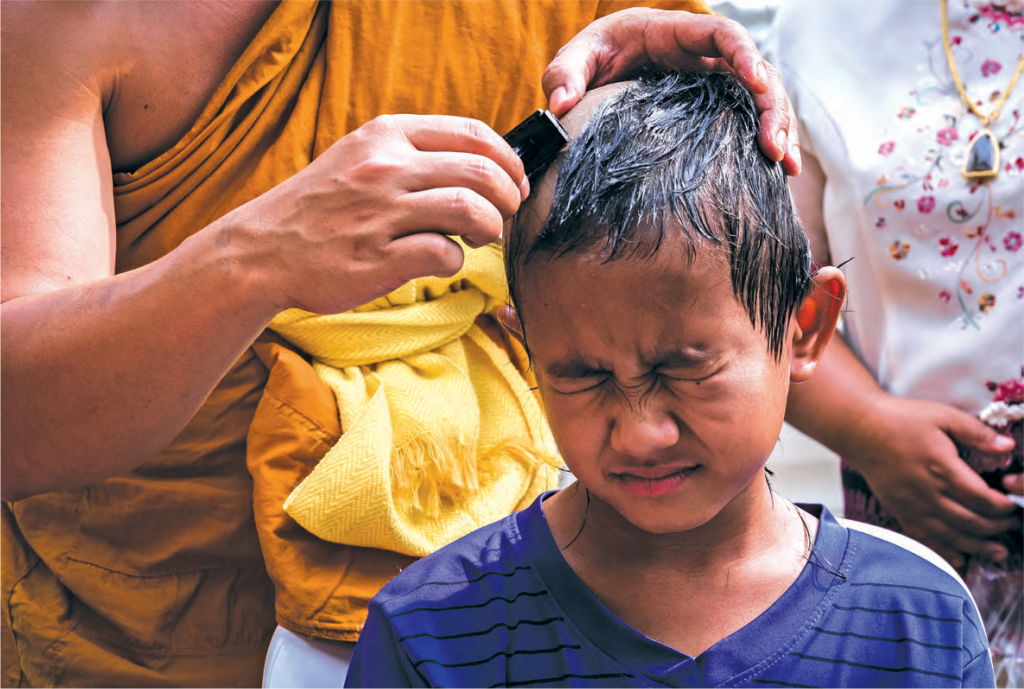
Traditionally, monks have the privilege to cut some hair first, then families cut a tuft of hair just before the monks return to shave the whole head of the boys. Buddhist principles forbid the use of electrical razors so only old- fashioned ones are used. After being shaved, the novices are ritually cleansed with sacred water and anointed with turmeric before being escorted to the temple hall for their first prayer and chanting session.
On the second day known as Rup Sang Long, the boys are dressed up to the nines in imitation of Gautama Buddha’s son, Rahun. Historical tales indicate that Gautama Siddhartha (who became later Buddha) was a prince when he set off for self-discovery. Nevertheless, according to the Tripitaka (the Buddhist almanac) Buddha himself had never been ordinated. Thus, the novices follow the path of Rahun. The Shan strongly believe in this legend and follow traditions that stem from it. When I reached the temple grounds, Nawin’s mother, Thong, was already busy applying some burgundy gloss on her son’s innocent lips. A seemingly wealthier family next to us even hired a professional make-up artist to do their son’s make-up. The ongoing metamorphosis didn’t seem to bother Nawin, who observed his mother through his small mirror. Nawin’s older sister Rinrada said it didn’t really affect her when I asked if she felt a bit left out as a girl because she was not allowed to be ordinated the same way the boys are.
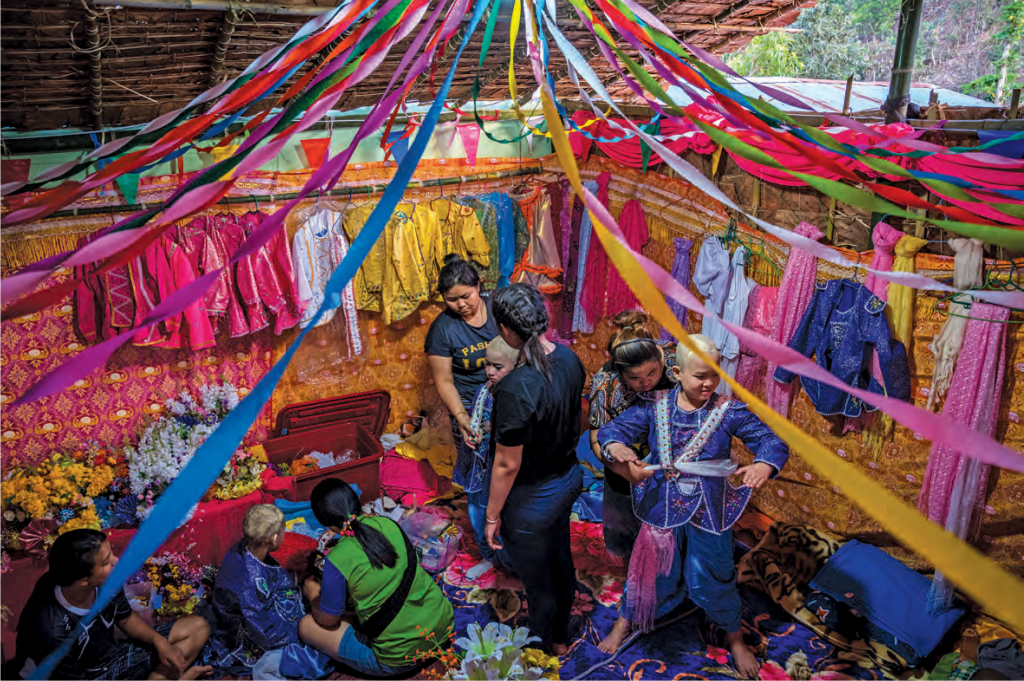
To complete the prince-like look, the boys were wrapped in festive dresses and adorned with traditional jewellery such as rings, necklaces, bracelets and, last but not least, the crown decorated with colourful flowers. Sadly, the Ministry of Culture in Mae Hong Son had abolished the Shan tradition of painting gold designs made of Tanaka powder on the novices’ faces, justifying that the ceremony should remain substantial and not be a kitsch exhibition.
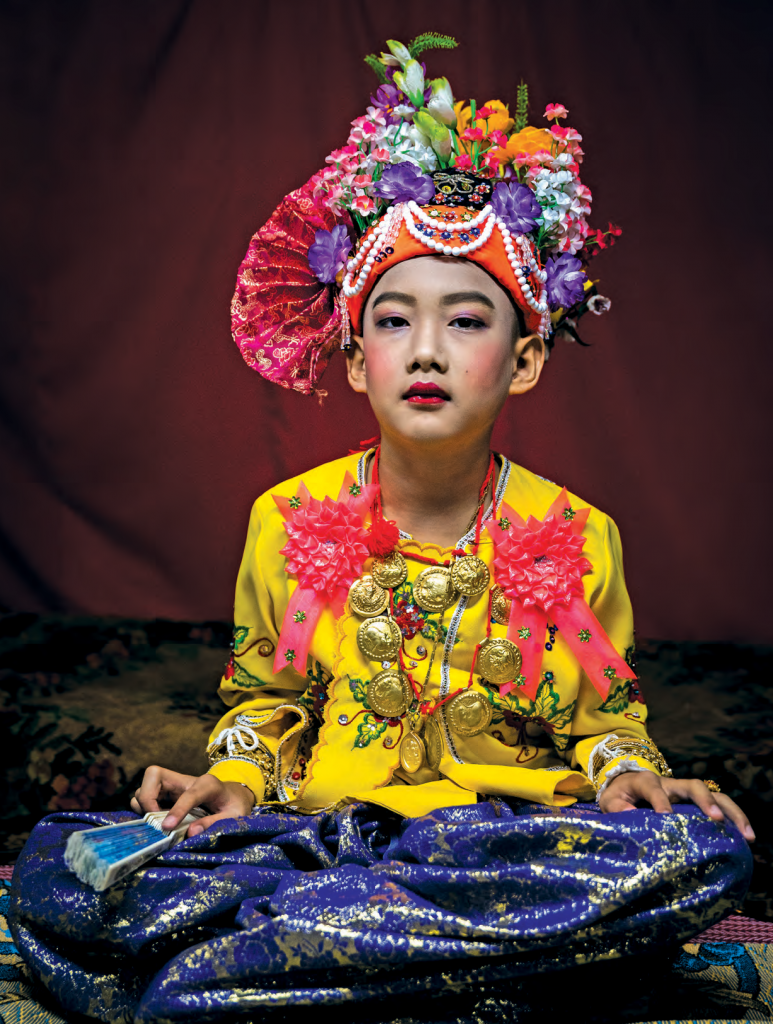
At the temple Wat Klang Thung, tapae, who were responsible for carrying the jewelled princes (sang long) on their shoulders from temple to temple, patiently waited for the boys to come out. They are responsible for preventing accidents from happening to the boys. The short-lived royals, just like real princes and kings, are not allowed to touch the ground — at least not until they enter the monastery as novices on the final day of Poy Sang Long. Rung who is one of the tapae for the occasion explains, “That’s why we carry them on our shoulders to make sure they are well protected and will safely attend the ordination.“
While Nawin and his fellow novices sit on the tapaes’ shoulders, other attendants shaded them with elaborately decorated umbrellas. Some wealthier families drive their sons around instead. Amidst the sounds of drums and clashing cymbals, the procession moved from place to place. Family members danced to the rhythm and threw 10-bhat coins wrapped in cloth towards the sang long. Whoever catches them will have good luck.
The short-lived royals, just like real princes and kings, are not allowed to touch the ground — at least not until they enter the monastery as novices on the final day of Poy Sang Long.
Responding to me, Nawin said with a grin, “Yes, I like it very much. Being carried on the shoulders of a tapae is definitely my favourite part of Poy Sang Long.“ As I listened to him, I hoped he would forget about Songkran for a while.
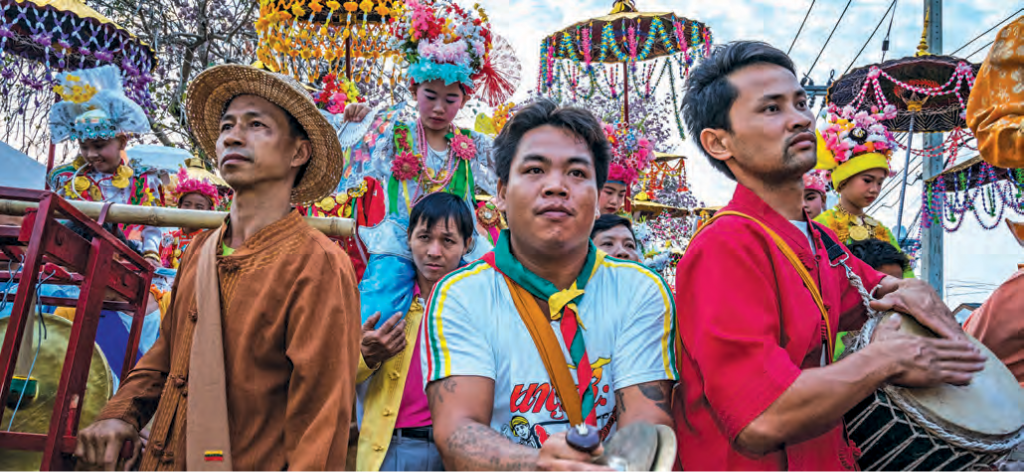
It was astonishing to observe the stamina of the tapae as they marched from place to place with 30 to 50 kilogrammes on their shoulders under the merciless sun. Fortunately, they got a break every 30 minutes when the parade reached another temple. Even when the sang long slept, the tapae slept nearby in case they needed to carry the boys to the toilet.
At one of the temples, I watched a senior monk tell the novices a tale before giving them some money in an envelope as a blessing. In the meantime, Tum Metanantavasin, a 32-year-old photographer from Mae Hong Son shared with me what he had gone through when he became a novice. When Tum entered a monastery after Poy Sang Long, the monks taught him the history of Buddhism and its philosophical ideas. He also learned the craft of meditation, which was to him the most important part as it helped him to be more tranquil and balanced.
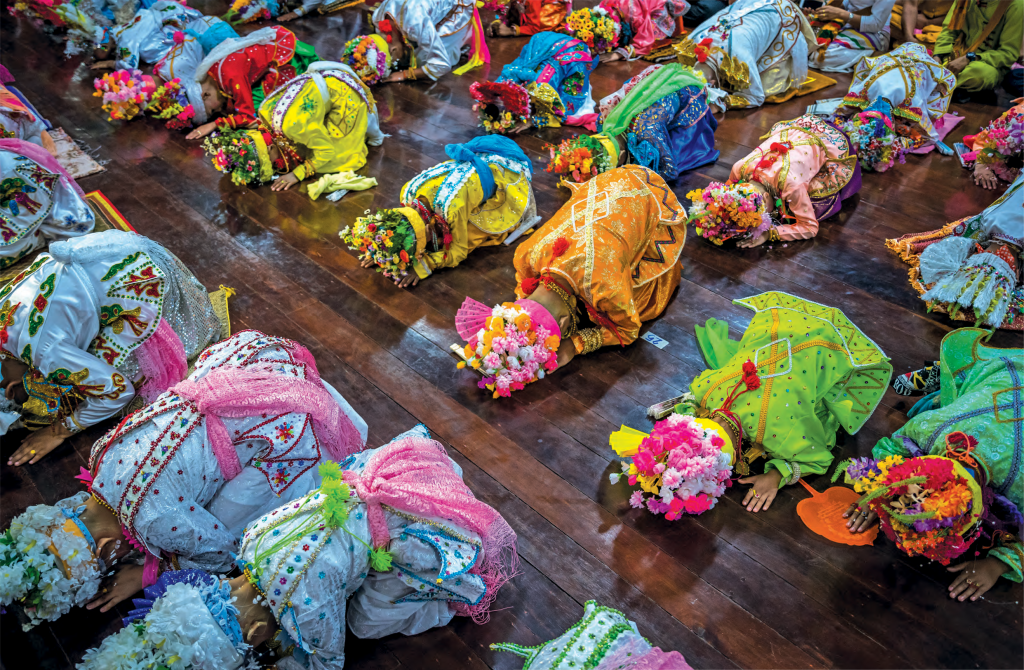
Read the rest of this article in Asian Geographic Passport No.133 Issue 5/2018 by downloading a digital copy here!


